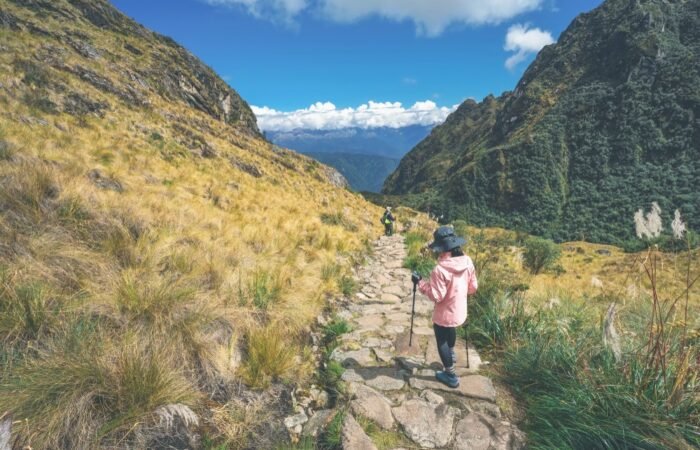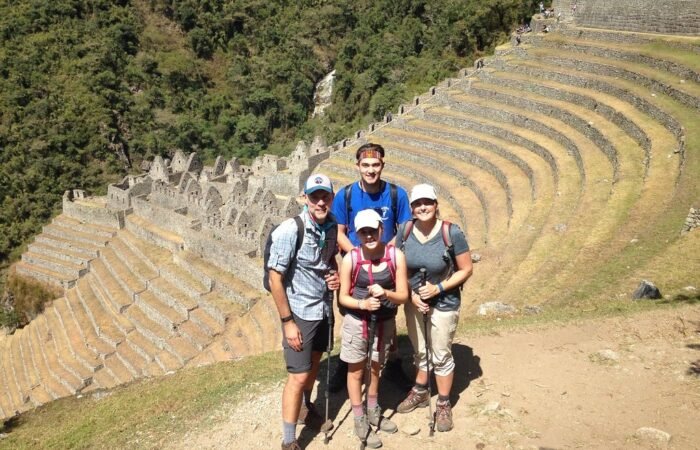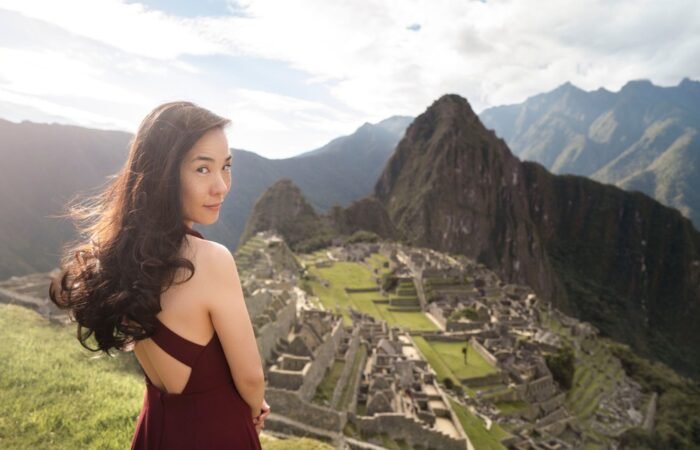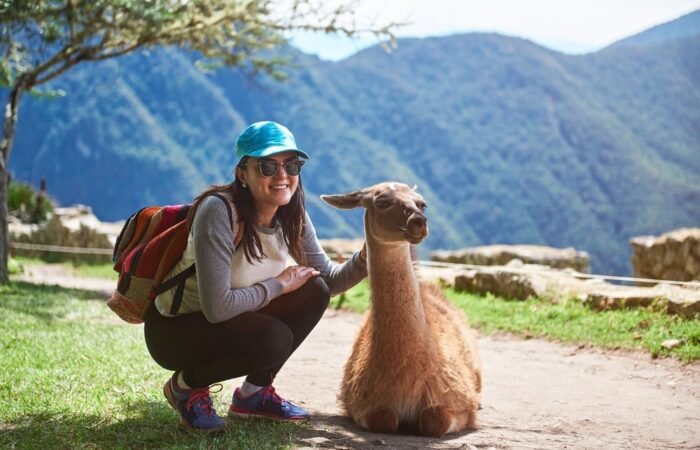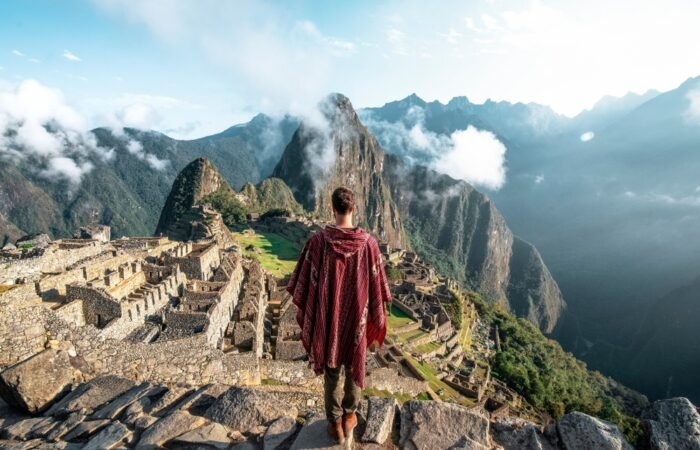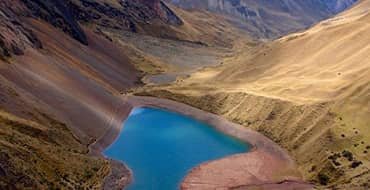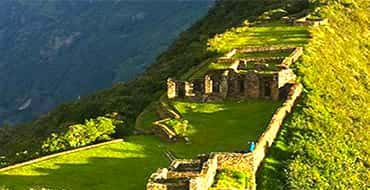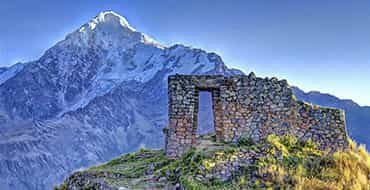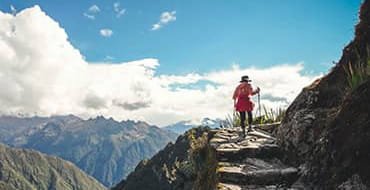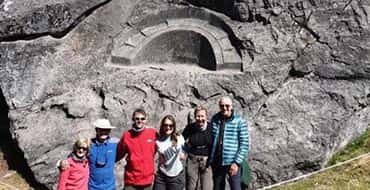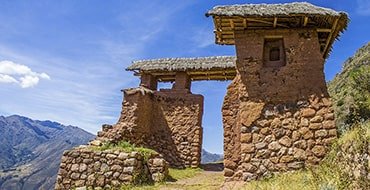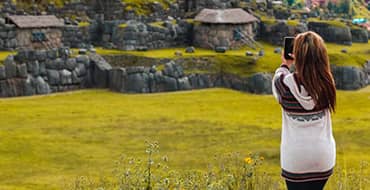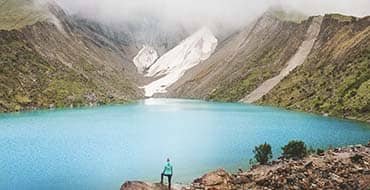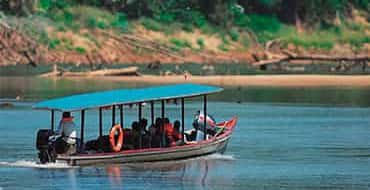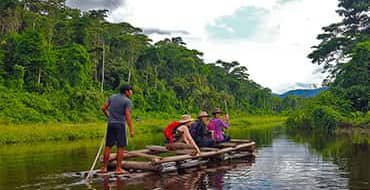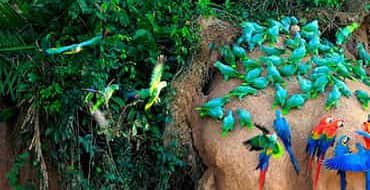

Introduction to Puca Pucara
Puca Pucara, often referred to as the first fortress constructed by the Incas, holds significant historical value within the context of South America’s ancient civilizations. Located approximately 7 kilometers from Cusco, this remarkable archaeological site overlooks the picturesque landscapes of the Andean region and serves as a testament to the architectural ingenuity of the Inca Empire. Built during the late 15th century, Puca Pucara was strategically positioned to provide a vantage point for monitoring the surrounding area, thus playing a critical role in the empire’s military strategy.
This fortress features a series of terraces, walls, and pathways, evidencing the sophisticated engineering skills of the Inca builders. The construction methods utilized large stones that were expertly fitted together, showcasing the precision and durability that the Incas were renowned for. The layout of Puca Pucara comprises a series of formidable structures, including watchtowers and storage facilities, which served both defensive and logistical purposes. These elements further highlight its role in safeguarding the Inca road system that linked Cusco to various regions of the empire.
While Puca Pucara served primarily as a military outpost, it also had political significance as it was likely used to control the movements of travelers and traders along the Inca Roads. Its proximity to Cusco, the empire’s capital, underscores the importance of this fortress not just as a defensive measure but also as an administrative hub. Understanding Puca Pucara’s historical significance provides valuable insights into the broader narrative of the Inca civilization, including its innovative approaches to warfare, trade, and territorial governance. The site remains a critical point of interest for historians and archeologists alike, offering a glimpse into the formidable presence of the Inca Empire in pre-Columbian South America.

Historical Context of the Inca Empire
The Inca Empire, known as Tawantinsuyu, emerged in the early 15th century and grew to become one of the largest empires in pre-Columbian America. Its rise to power can largely be attributed to a combination of effective leadership, innovative agricultural practices, and advanced engineering skills. The Incas, initially a small tribe located in the highlands of Peru, began their ascent under the rule of Pachacuti Inca Yupanqui, who significantly expanded the territory through a series of conquests and strategic alliances.
The empire’s expansion strategies included military conquests, which were facilitated by well-organized armies and a network of roads that allowed for rapid troop movement. The Incas did not merely rely on brute force; they often assimilated defeated peoples into their society, incorporating their cultures and customs, which contributed to the stabilization of newly acquired territories. Their effective governance system ensured efficient tax collection and resource distribution, further solidifying their control over vast regions.
The Inca Empire also thrived due to its impressive agricultural advancements, such as the development of terrace farming, which maximized arable land in the mountainous terrain. The Incas implemented a comprehensive network of irrigation systems and storage facilities to support their population and military needs. This agricultural prowess played a crucial role in sustaining the empire, allowing it to support large armies during campaigns.
Additionally, the Incas utilized diplomacy alongside military might, negotiating with local leaders to maintain peace or to facilitate their integration into the Inca administrative structure. This multifaceted approach—combining warfare, diplomacy, and agricultural innovation—established the Inca Empire as a dominant force in South America, paving the way for monumental constructions like the fortress of Puca Pucara, which served as a strategic military and administrative site along critical trade routes.


Architectural Features of Puca Pucara
Puca Pucara, an impressive Inca fortress situated in the picturesque region of Cusco, showcases an array of architectural features that reflect the advanced engineering and construction techniques employed by the Inca civilization. Primarily built from local sandstone, which was readily available, the choice of material not only provided durability but also harmonized with the surrounding landscape. The stone blocks were meticulously shaped to fit together without the use of mortar, a hallmark of Inca construction. This technique, known as ashlar masonry, enabled the structures to withstand seismic activity, a common occurrence in the region.
The layout of Puca Pucara is significant, designed to maximize both functionality and strategic advantage. The fortress is structured in a series of terraces and platforms, which allowed for a clear view of the surrounding valley, making it easier to detect approaching enemies. The complex features several enclosures, ceremonial spaces, and storage areas, illustrating the multifaceted purpose of the fortress beyond mere defense. Moreover, its positioning on elevated ground ensured control over travel routes, particularly those leading to the nearby sacred valley, enhancing its role as a vital military and administrative center.
Furthermore, essential to the fortress’s design is the water management system, cleverly integrated into the architecture. The presence of aqueducts and water conduits ensured a consistent supply of water, crucial for sustaining garrison troops and supporting agricultural activities in the vicinity. This combination of strategic location, expert craftsmanship, and advanced planning exemplifies the Inca’s understanding of architecture and engineering. The architectural features of Puca Pucara not only affirm its role as a formidable fortress but also reflect the innovative spirit of the Inca civilization, showcasing their ability to harmoniously blend functionality with the aesthetic qualities of their environment.
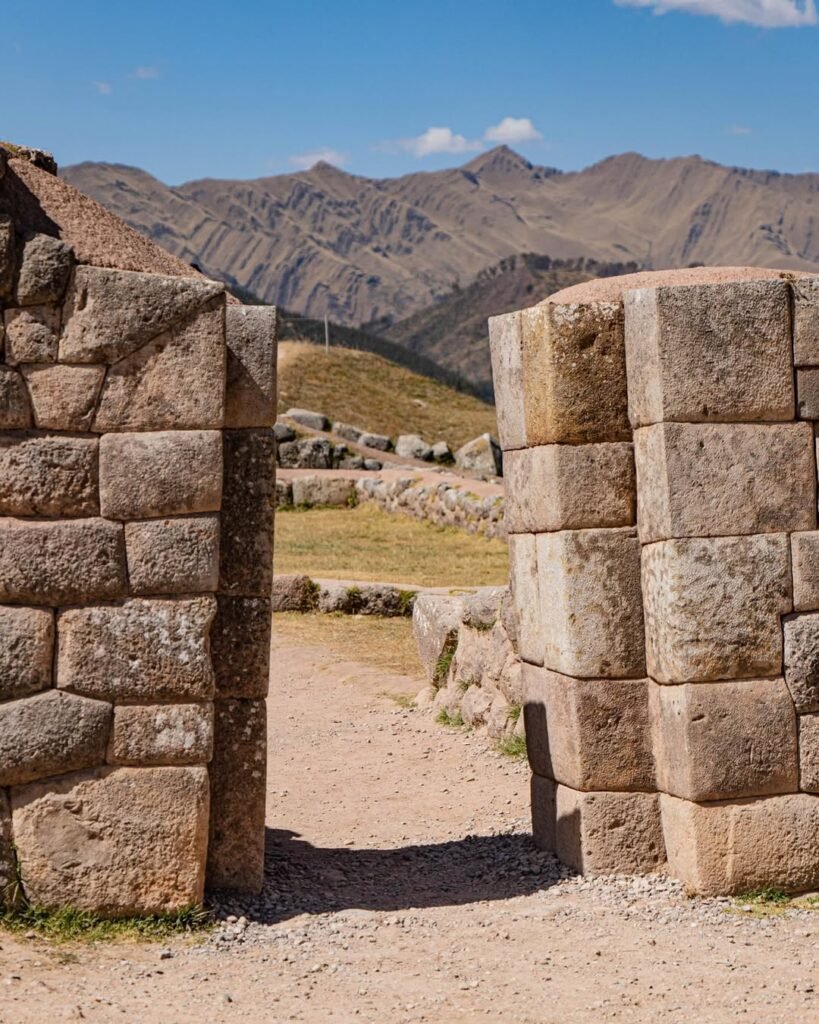

Military Functions of Puca Pucara
Puca Pucara, a significant architectural marvel of the Inca civilization, served not merely as a picturesque ruin but primarily as a military fortress. This strategic site was constructed with the intention of fortifying the Inca Empire’s borders, thereby providing a robust defensive structure that could withstand potential incursions from adversaries. Positioned strategically within proximity to Cusco, it allowed for enhanced surveillance of the surrounding terrain, acting as an essential watchpoint for monitoring movements across the region.
Moreover, Puca Pucara’s layout facilitated quick troop mobilization and logistical support, serving as a vital supply station for Incan soldiers during military campaigns. The construction included the provision for storage facilities that could house supplies, arms, and provisions, ensuring that troops were adequately supported during extended operations. This aspect of Puca Pucara underscored the Incas’ military ingenuity, as it emphasized the importance of ready access to resources in times of conflict.
The fortress’s military function is further underscored by its intricate architecture, which combined natural landscape features with deliberate structural elements designed to enhance defensive capabilities. The high walls and terraces provided advantageous vantage points, allowing guards and sentinels to detect incoming threats early. This comprehensive approach to military architecture enabled Puca Pucara to effectively play a key role during various military operations conducted by the Inca Army.
Furthermore, historical accounts suggest that Puca Pucara witnessed numerous skirmishes and served not just as a defensive bastion but also as a coordination hub for Incan forces. Troops crisscrossed through its corridors, and its commanding presence served as a psychological deterrent to opponents. Through these multifaceted military functions, Puca Pucara emerged as a significant stronghold in the Incan defense system.

Cultural Significance for the Incas
Puca Pucara, strategically positioned on a rocky promontory just outside Cusco, serves as an enduring testament to the cultural and religious fabric of Inca society. As a fortress, it was not merely a military stronghold but also a focal point of identity and ritual that embodied the Inca worldview. The architectural features of Puca Pucara, including its terraces, aqueducts, and well-defined layout, reflect the high level of sophistication and planning that characterized Inca engineering. Such structures were pivotal in reinforcing Inca dominance over the surrounding landscape.
Within the cultural context, Puca Pucara likely played a vital role in various ceremonies that were instrumental in affirming the Incas’ spiritual beliefs. The site is thought to have been a place of pilgrimage, where rituals connected to the landscape and the sacred nature of the mountains were performed. These practices were essential in maintaining a harmonious relationship between the community and the deities they worshipped. The Incas held the Pachamama, or Earth Mother, in high regard, and sites like Puca Pucara served as a conduit for offering thanks and seeking favor.
Furthermore, Puca Pucara symbolized the overarching power of the Inca Empire. Its commanding presence served as a reminder of the authority that the Sapa Inca wielded over the vast territories of the empire. This strategic fortress facilitated the movement of armies and controlled access along critical trade routes, thereby reinforcing the economic and military strength of the Incas. Ultimately, Puca Pucara illustrates how architecture and geography were intertwined with the cultural, spiritual, and political dimensions of the Inca civilization, underscoring the significance of this site in the narrative of Inca heritage.


Puca Pucara Today: Archaeological Insights
Puca Pucara, a significant archaeological site located near Cusco, Peru, has become an important focal point for researchers studying Inca civilization. Recent excavations have yielded a wealth of information that contributes to a deeper understanding of the Inca’s architectural and cultural practices. Among the notable findings are intricate stone structures, terraces, and aqueducts that demonstrate advanced engineering techniques used by the Incas. These discoveries reflect not only the functionality of Puca Pucara as a military fortress but also its role in supporting the logistical needs of the Inca Empire.
Preservation efforts have become essential in maintaining the integrity of Puca Pucara as an archaeological site. The Peruvian government, along with various academic organizations, has implemented conservation strategies to protect the site against environmental degradation and tourist impact. These measures include limiting access to sensitive areas, ongoing monitoring of structural stability, and utilizing modern technology to document and analyze the site without intrusive methods. Such initiatives help ensure that Puca Pucara remains a valuable resource for future generations.
Ongoing studies of artifacts unearthed at Puca Pucara are also enhancing our comprehension of Inca history. Items such as pottery, tools, and ceremonial objects provide researchers with insights into daily life, trade practices, and spiritual beliefs of the Inca people. Furthermore, the analysis of these findings is revealing connections between Puca Pucara and other archaeological sites in the region, therefore painting a more comprehensive picture of how Inca society functioned. Overall, the integration of modern archaeological methods and interdisciplinary studies is proving instrumental in uncovering the complexities of Puca Pucara and its significance within the grand narrative of Inca history.


Tourism and Visitor Experience
Visiting Puca Pucara offers an intriguing glimpse into Inca history, positioned just 8 kilometers from Cusco, Peru. Accessible by private transportation, taxis, or guided tours, this fortress is a popular stop for tourists exploring the Sacred Valley. The journey from Cusco to Puca Pucara presents scenic views of the Andean landscape, setting the stage for an enriching historical experience.
Upon arrival, visitors are greeted by the impressive stone structures that characterize this ancient site. Puca Pucara, meaning “red fort,” stands out for its distinctive reddish rock and strategic location, making it an ideal place to see how the Incas utilized the natural landscape for defense and surveillance. Important sights to observe include terraced agricultural fields, water channels, and the surrounding mountains. Each feature offers insight into the ingenuity of Inca engineering and lifestyle.
To maximize the experience, many visitors opt for guided tours that delve into the historical significance of Puca Pucara and its role in the Inca empire. Knowledgeable guides provide valuable context, recounting stories of the fortress’s construction, its military purpose, and even its role as a resting place for travelers. Such tours often include additional stops at neighboring sites like Tambomachay and Qenqo, creating a comprehensive day of exploration.
In addition to appreciating the magnificence of Puca Pucara, it’s essential for visitors to engage in responsible tourism. This includes respecting local customs, minimizing environmental impact, and supporting preservation initiatives. Every individual contribution toward maintaining the cultural heritage of Puca Pucara ensures that future generations can also experience this remarkable fortress. By fostering awareness around responsible tourism, visitors can help protect the integrity of this site while enjoying the rich history it has to offer.


Comparisons with Other Inca Fortresses
Puca Pucara, as the first Inca fortress unveiled, presents intriguing architectural traits and historical significance when evaluated alongside other renowned Inca fortresses such as Sacsayhuamán and Ollantaytambo. Each fortress showcases unique characteristics reflective of Inca engineering prowess, societal organization, and military strategies. While all three served defensive purposes, their construction and layout reveal diverse applications of Inca architectural principles.
Sacsayhuamán, located on the outskirts of Cusco, is recognized for its massive stone walls, expertly fitted without mortar, showcasing the Inca’s advanced understanding of construction. The fortress’s larger size and intricate terraces suggest a multifaceted role beyond mere military defense, likely functioning as a ceremonial site as well. In comparison, Puca Pucara exhibits a more compact design, comprising a series of strategic platforms and walls that denote its function as a checkpoint for travelers and perhaps a supply depot, indicating a different operational focus.
In the context of Ollantaytambo, another prominent fortress, its architectural layout serves as a vital link between the valley and the Inca Empire. Ollantaytambo is characterized by steep terraces and an advanced irrigation system, indicating its role in both defense and agriculture. Unlike Ollantaytambo, the simpler yet pragmatic design of Puca Pucara highlights its primary role as a waystation, monitoring the Incan road system. This specialized function suggests that while Puca Pucara may lack the grandeur of Sacsayhuamán and Ollantaytambo, its strategic importance within the Inca Empire must not be underestimated.
Overall, through careful comparison, it becomes evident that while Puca Pucara shares the common attributes of strength and durability with other Inca fortresses, its distinct features illustrate a diversity in purpose and form within the remarkable tapestry of Inca architecture.


Conclusion: The Legacy of Puca Pucara
Puca Pucara, often referred to as the first Inca fortress, remains a significant symbol of ancient Andean civilization and the enduring legacy of the Inca Empire. Established during the 15th century, this strategic military outpost not only served a defensive purpose but also facilitated the monitoring of vital trade routes in the region. Its architectural ingenuity, characterized by sophisticated stonework and intricate designs, reflects the advanced engineering skills of the Incas, which were crucial for the establishment and maintenance of their vast empire.
In contemporary discussions about Inca civilization, Puca Pucara plays an essential role as a focal point of cultural and historical significance. The fortress is not merely an archaeological site; it symbolizes the rich heritage of South America and serves as a bridge connecting the past to the present. The ongoing research and preservation efforts surrounding Puca Pucara ensure that it continues to be a critical reference for understanding the social, political, and military aspects of Inca life and governance.
Moreover, as globalization progresses, the relevance of Puca Pucara extends beyond historical discourse. It has become a site of cultural pride for the people of Peru, fostering a sense of identity and continuity among modern descendants of the Incas. Educational programs and tourism initiatives are increasingly highlighting the importance of such historical landmarks, promoting deeper appreciation and understanding of Indigenous cultures and their contributions to world heritage.
In conclusion, the legacy of Puca Pucara is multifaceted, encompassing not only its historical significance as a military stronghold but also its vital role in contemporary cultural discourse. Through ongoing studies and community engagement, the fortress will continue to inspire respect for ancient civilizations and a commitment to preserving their narratives for future generations.
